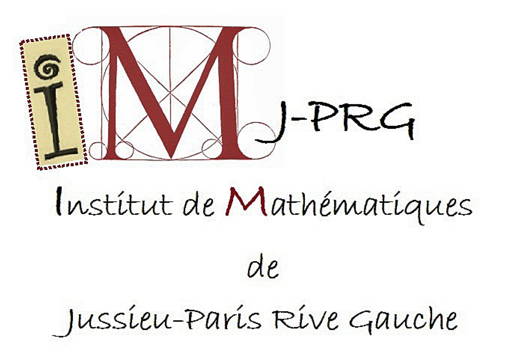Riccardo CAMERLO
Complete sequences of coanalytic sets
The notion of a complete sequence of pairwise disjoint coanalytic sets is investigated. Several examples are given and such sequences are characterised under analytic determinacy, extending earlier results of Saint Raymond.
John CLEMENS
Bounded reflection
The First Reflection Theorem shows that, given a $\Pi^1_1$ on $\Sigma^1_1$ ideal $I$, any analytic set in $I$ is contained in a Borel set in $I$. It is less clear when there a bound can be found on the required Borel ranks of these sets. I will discuss some examples, and show that under suitable hypotheses, the existence of such a bound implies that the reflection extends to higher levels of the projective hierarchy (joint work with Jindra Zapletal).
Pandelis DODOS
New results in Ramsey Theory
We shall review some recent advances in Ramsey Theory. The talk will be based on joint work with V. Kanellopoulos and K. Tyros.
Mirna DZAMONJA
Embeddings of the spaces of the form $C(K)$
We discuss the question if the number of universal models for Banach spaces of a given density remains the same when we consider isomorphisms or isometries. The techniques used are analytic, set theoretic and model theoretic.
Marton ELEKES
Properties of almost all continuous functions
We examine the size of the image, graph, and level sets of almost all members of $C(K)$. Here size is measured mostly in terms of various notions of dimension, and almost all refers to either generic or co-Haar-null. Joint work with R. Balka and U. B. Darji.
Stefan GESCHKE
Definable Graphs of low complexity
We discuss some recent results on graphs on Polish spaces whose Borel class is at most ${\bf\Delta}^0_2$, concentrating on clopen graphs.
Julien MELLERAY
Generic actions of countable groups on homogeneous structures
Given a countable group $\Gamma$ and a homogeneous countable structure $M$, one can consider the set of actions of $\Gamma$ on $M$, with its natural Polish structure. $Aut(M)$ acts on this space by conjugation, and it is interesting to investigate the existence of a comeager conjugacy class. I'll describe in detail what happens when $M$ is a countable discrete set, and discuss more complicated cases if time permits.
Benjamin MILLER
The descriptive complexity of the space of Lascar strong types
We will discuss the descriptive complexity of the Lascar strong type equivalence relation, which arises in connection with forking in simple theories. This is joint work with Itay Kaplan and Pierre Simon.
Luca MOTTO ROS
On the structure of finite level and $\omega$-decomposable Borel functions
We give a full description of the structure under inclusion of all finite level Borel classes of
functions, and provide an elementary proof of the well-known
fact that not every Borel function can be written as a countable union of
$\boldsymbol{\Sigma}^0_\alpha$-measurable functions (for every fixed $1
\leq \alpha < \omega_1$). Moreover, we present some results concerning
those Borel functions which are $\omega$-decomposable into continuous functions (also
called countably continuous functions in the literature), and we analyze finite level Borel
functions in terms of composition of simpler functions. Finally, if time permits we will present an easy application of the previous results to Banach space theory.
Lionel NGUYEN VAN THÉ
Expanding Fraisse classes into Ramsey classes (joint work with Yonatan Gutman and with Todor Tsankov)
Given a Fraisse class, it is natural to ask when it admits a "reasonable" expansion in a richer language which also has the Ramsey property. The purpose of this lecture is to present an answer to this question in terms of topological dynamics when "reasonable" means that every element of the original class only has finitely many expansions in the richer language.
Marcin SABOK
Canonization for equivalence relations classifiable by countable structures
I will discuss several results on canonical Ramsey theory in the context of descriptive set theory. I will focus on Borel equivalence relations which are classifiable by countable structures and show what kind of canonization results can be obtained for this class. Canonization in this class will turn out to be closely related to canonization in the smaller class of essentially countable equivalence relations. This is joint work with V. Kanovei and J. Zapletal.
Philipp SCHLICHT
Perfect subsets of generalized Baire spaces
Let $\kappa$ be an uncountable cardinal with $\kappa^{ < \kappa}=\kappa$. We consider the generalized Baire space of functions $f\colon\kappa\rightarrow\kappa$ with basic open sets $U_s=\{f\in {}^{\kappa}\kappa\mid s\subseteq f\}$ for $s\in {}^{ < \kappa}\kappa$. A subset of ${}^{\kappa}\kappa$ is perfect if it is the set of branches of a $ < \kappa$-closed subtree of ${}^{ < \kappa}\kappa$ which splits above every node.
We prove that after an inaccessible $\lambda>\kappa$ is collapsed to $\kappa^+$, every set $A\subseteq {}^{\kappa}\kappa$ definable from ordinals and subsets of $\kappa$ either has size $\leq\kappa$ or a perfect subset, and that the Banach-Mazur game for $A$ is determined.



